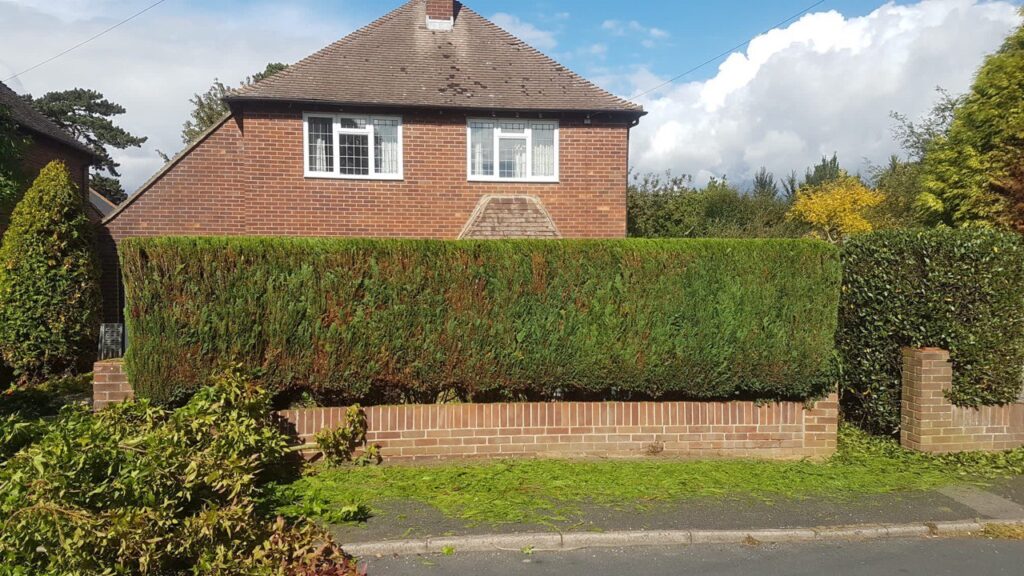Tree Crown Reduction: Maximising Safety During Pruning Operations
Introduction: Tree crown reduction is an essential tree care practice that involves carefully removing branches to reduce the overall size and density of the canopy. While this technique offers numerous benefits for tree health, aesthetics, and safety, it has risks. Ensuring the safety of both the arborists and the surrounding environment during pruning operations is paramount.
Here’s how to maximise safety during tree crown reduction:
- Proper Assessment and Planning
Before any pruning operation, a thorough assessment of the tree and its surroundings is crucial. This includes identifying any potential hazards, such as power lines, buildings, and roads. Planning the operation carefully helps avoid accidents and ensures the pruning is conducted safely and efficiently.
Key Steps:
- Inspect the tree visually for any signs of disease, decay, or structural weaknesses.
- Identify and mark any potential hazards in the vicinity.
- Develop a detailed pruning plan that outlines the specific branches to be removed and the equipment needed.
- Using the Right Equipment
Appropriate tools and equipment are essential for safe and effective tree crown reduction. This includes both personal protective equipment (PPE) and pruning tools. Ensuring all equipment is in good working condition and suitable for the task can prevent accidents and injuries.
Essential Equipment:
- Hard hats, safety glasses, and gloves for personal protection.
- Climbing harnesses and ropes for secure access to higher branches.
- Pruning saws, loppers, and secateurs for precise cutting.
- Chainsaws for thicker branches are operated only by trained professionals.
- Training and Expertise
Tree crown reduction should ideally be performed by trained and experienced arborists. Professional arborists possess the necessary skills and knowledge to carry out pruning operations safely and effectively. They are also familiar with best practices and safety protocols, reducing the risk of accidents.
Important Considerations:
- Ensure that all personnel involved in the pruning operation are properly trained and certified.
- Regularly update training to keep up with the latest safety standards and techniques.
- Encourage continuous learning and skill development among the team.
- Safe Work Practices
Adhering to safe work practices during pruning operations is essential for minimising risks. This includes following proper climbing techniques, using secure anchor points, and maintaining clear communication among the team. Safe work practices help to create a controlled and safe working environment.
Best Practices:
- Always use secure anchor points and maintain three points of contact when climbing.
- Communicate any potential hazards and changes in the work plan.
- Avoid working alone and ensure that there is always a ground crew present to assist if needed.
- Environmental Considerations
Pruning operations can impact the surrounding environment, so it is important to take necessary precautions to protect nearby plants, wildlife, and structures. Minimising the environmental impact ensures that crown reduction’s benefits are maximised without causing unintended harm.
Environmental Safety Tips:
- Avoid pruning during nesting seasons to protect local wildlife.
- Use proper disposal methods for removing branches and debris.
- Be mindful of the impact on nearby plants and structures, and take steps to protect them during the operation.
Conclusion: Maximising safety during tree crown reduction operations is crucial for the well-being of both the arborists and the environment. Proper assessment and planning, using the right equipment, ensuring training and expertise, adhering to safe work practices, and considering environmental impacts are all essential components of a safe and effective pruning operation.
Call us on: 01234 860 988
Click here to find out more about Cranfield Tree Surgeons
Click here to complete our contact form and see how we can help you with your tree’s needs.

